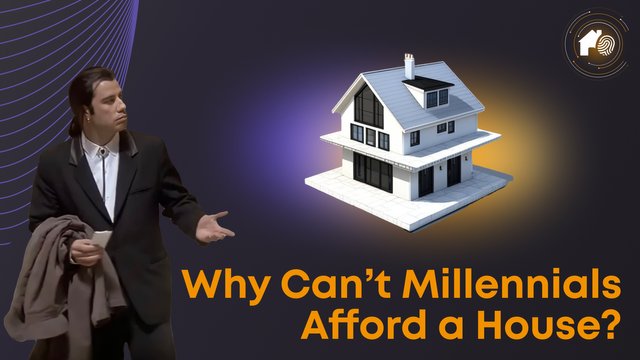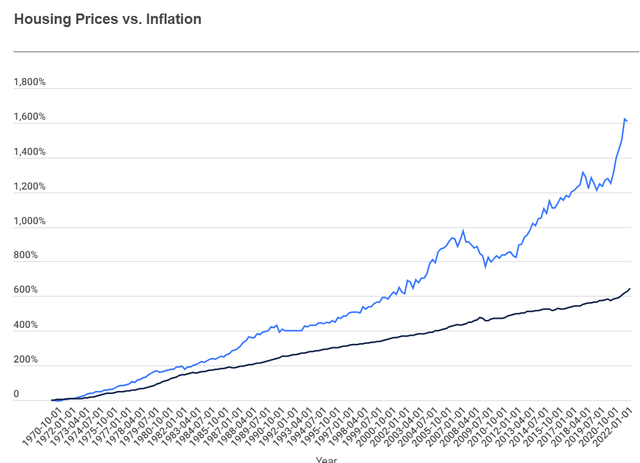Why Can’t Millennials Afford a House?
The housing crisis has been a problem since the beginning of the 21st century. Still, it became especially egregious after the pandemic when housing prices rose by several tens of percent in just a few years. Many millennials talk about how they can't afford to own a home when their parents and grandparents could.
Maybe it's not the price? Maybe millennials don't know how to save money? Let's look at the numbers.

Housing Affordability In 1985 vs Today
In 2021, the inflation rate surged to 7.5%, which is nearly four times the Federal Reserve's target inflation rate of 2%. This has significantly impacted the cost of living and the housing market. The average home price in the United States has increased by more than 20% since the beginning of the pandemic, making it increasingly difficult for first-time homebuyers to afford a home.
In 1985, the average single-family home cost $82,800, which was affordable for most baby boomers who turned 30 at the time. However, the cost of housing has increased significantly since then, and the average millennial who turned 30 in 2019 would have needed to spend $313,000 on a typical home. This is a cost rise that far outpaces inflation, making homeownership increasingly out of reach for millennials.

Several factors have contributed to the rise in home prices, including low interest rates, high demand, and limited supply. Low interest rates have made it more affordable to borrow money to buy a home, which has increased demand. High demand has led to bidding wars, further driving up prices. Limited supply has also contributed to the problem, as there are simply not enough homes for sale to meet the demand.
The rising cost of housing is a major concern for many Americans, as it is a major expense that can significantly impact their quality of life.
In addition to the rising cost of housing, inflation has negatively impacted other areas of the economy. The cost of goods and services has increased, making it more difficult for people to make ends meet. This has led to decreased consumer spending, which could harm economic growth.
Home prices have increased drastically in the last 50 years, rising 150% faster than inflation since 1970. In fact, if home prices had increased at the same rate as inflation since 1970, the median home price today would be just $177,788 – rather than $408,100.
This means that home ownership has become increasingly out of reach for many people, as the cost of housing has outpaced the growth of wages dramatically.
Can Technology Solve the Crisis
Modular homes, built off-site in controlled environments, provide a cost-effective and efficient solution to housing. Their standardized production ensures quality, speeds up construction, and reduces labor costs, making housing more affordable.
On the financial side, tokenization, achieved by converting property ownership into digital tokens on a blockchain, enables fractional ownership. This means people can invest in just a portion of a property, making real estate more accessible. Furthermore, the transparency and reduced need for intermediaries in the blockchain process can lower transaction costs and boost trust.
Together, modular homes and tokenization can pave the way to more affordable housing solutions. There are already projects on the market that use tokenization and modular technology to build affordable homes. For example, Home Key offers the construction of a house for the price of an apartment in just 3 months.
Therefore, there is still hope. Houses may become available again!